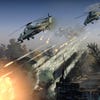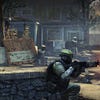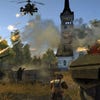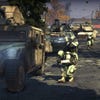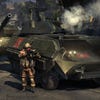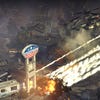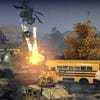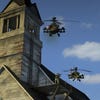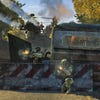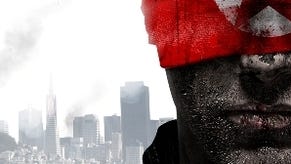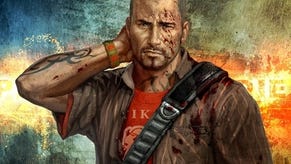Homefront
Multiplayer hands-on with Battle Commander.
There are shades of Splash Damage's Brink to this, and welcome ones - if a player or a group of players is doing particularly well, the Battle Commander may assign them missions based on their particular proficiency. A sniper may be told to secure another three successive kills, for example. The rewards for doing so are additional buffs and more dramatic Battle Commander objectives.
Missions are rated out of five stars. As individuals (or groups, or even specific drones) advance up the star scale the opposing team's Battle Commander takes notice and designates those individuals for specific fire missions, providing heads-up display directions to opposing players so they can try to shut down their killing sprees.
Kaos describes it as "making large-scale warfare personal" and "supporting basic revenge instincts with escalating rewards", but a simpler way to put it is that it organises combat so that nobody gets too big for their boots. Moreover, taking out people on Battle Commander missions confers a lot more Battle Points.
At first we play regular rounds of Team Deathmatch and Ground Control (a capture-and-hold mode where the frontline of combat is pushed across the map by shifting objectives based on each team's score) without the Battle Commander, and they are interesting enough.
The Cul-de-Sac map's abandoned houses, backyard swing-sets and piles of overturned family saloons make for intricate, claustrophobic killzones, while Farm's steep hills, barns and open spaces are a drone-lover's paradise.
But the introduction of Battle Commander on Suburb - an Xbox 360-exclusive map full of neat wooden houses and interesting sight-lines for snipers - alters the flow. The best intentions of team-mates at multiplayer FPS press events rarely coagulate into actual co-operation for longer than a couple of minutes, but the Battle Commander's tasking eases players naturally together as they converge on high-value targets.
Kaos' goal may simply have been to burnish instinctive FPS behaviour with structure and reward, but it also seems to encourage lone wolves to work together - not unlike Valve's celebrated AI Director in the Left 4 Dead series.
"If you're not going to bring something new to the table then why even bother?" senior level designer Rex Dickson says to us prior to our first experience with Battle Commander. His comments aren't aiming for any other FPS specifically, but in a genre where everyone politely uses slightly different names for the same systems and annual changes to rulesets are met with great fanfare, it's a nice attitude to encounter.
Battle Commander isn't as mighty an advance as THQ's grandiose introduction of it might suggest, but it, along with experience clearly drawn from Kaos' endeavours with the useful if not spectacular Frontlines: Fuel of War, suggest that Homefront multiplayer will be competitive when it hits in March.
Allied to a bold singe-player campaign heavily influenced by Half-Life 2, it could make for a game that injects much-needed new energy into a polished but increasingly homogenised modern combat genre. Sun Tzu would probably like that.
For all the latest on Homefront, check out our dedicated microsite.

